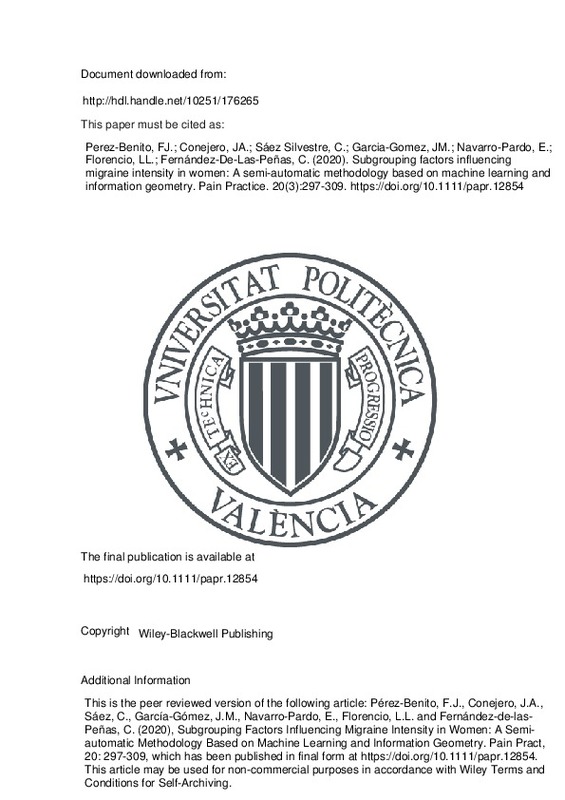JavaScript is disabled for your browser. Some features of this site may not work without it.
Buscar en RiuNet
Listar
Mi cuenta
Estadísticas
Ayuda RiuNet
Admin. UPV
Subgrouping factors influencing migraine intensity in women: A semi-automatic methodology based on machine learning and information geometry
Mostrar el registro completo del ítem
Perez-Benito, FJ.; Conejero, JA.; Sáez Silvestre, C.; Garcia-Gomez, JM.; Navarro-Pardo, E.; Florencio, LL.; Fernández-De-Las-Peñas, C. (2020). Subgrouping factors influencing migraine intensity in women: A semi-automatic methodology based on machine learning and information geometry. Pain Practice. 20(3):297-309. https://doi.org/10.1111/papr.12854
Por favor, use este identificador para citar o enlazar este ítem: http://hdl.handle.net/10251/176265
Ficheros en el ítem
Metadatos del ítem
| Título: | Subgrouping factors influencing migraine intensity in women: A semi-automatic methodology based on machine learning and information geometry | |
| Autor: | Navarro-Pardo, Esperanza Florencio, Lidiane L. Fernández-de-las-Peñas, César | |
| Entidad UPV: |
|
|
| Fecha difusión: |
|
|
| Resumen: |
[EN] Background Migraine is a heterogeneous condition with multiple clinical manifestations. Machine learning algorithms permit the identification of population groups, providing analytical advantages over other modeling ...[+]
|
|
| Palabras clave: |
|
|
| Derechos de uso: | Reserva de todos los derechos | |
| Fuente: |
|
|
| DOI: |
|
|
| Editorial: |
|
|
| Versión del editor: | https://doi.org/10.1111/papr.12854 | |
| Descripción: |
|
|
| Tipo: |
|







![[Cerrado]](/themes/UPV/images/candado.png)


